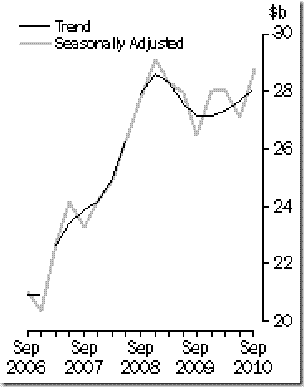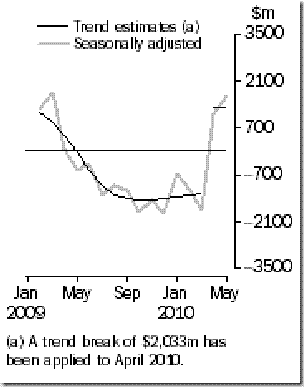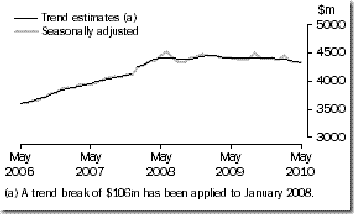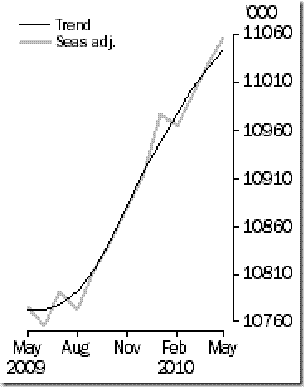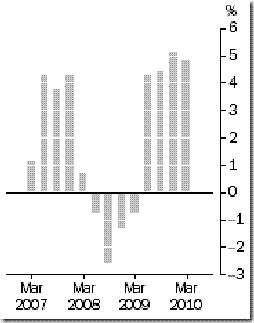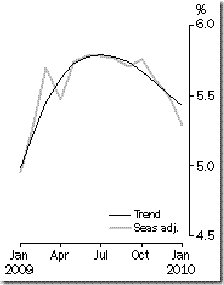In a piece on my personal blog, Sunday Essay - why it's hard to break out of the box, I said at the end:
If I was asked what was the biggest single impediment to change today I would say the computer.
The adoption of computers and IT more broadly has been one of the greatest causes of economic growth because it allowed existing things to be done more efficiently, new things to be done that could not be done before. Yet, as any IT professional knows, there is a considerable difference between simply computerising existing systems (this will certainly make them more efficient) and the design of completely new systems likely to yield the greatest benefit from the new technology.
I first came across the problem of computer lock-in a number of years ago when facilitating the development of a strategic plan for the Australian subsidiary of a global IT company.
Everybody at the workshop agreed that the company's IT and knowledge management systems no long properly reflected either company needs or the marketplace. Everybody also agreed that the sheer cost of changing the system meant that senior management would not agree. They just had to work around it.
You see, once entrenched, the computer protects what is at the expense of what might be.
In a comment, my old friend and now blogging colleague Winton Bates sought further clarification of just what I meant by computer lock-in. I started to respond by way of comment, and then decided that I should discuss the matter here because it is an important and interesting issue from both a management and economics perspective.
The discussion that follows does not address the claim that I made above that the computer has become the single greatest impediment to change today. My purpose is purely explanatory.
Meaning of Computer Lock-in
By computer lock-in, I simple mean the way in which existing IT systems and approaches can actually impede change, reducing efficiency by locking in past approaches.
This type of lock-in can occur in different ways.
To begin with, lock-in occurs when the cost of making the changes to systems exceeds the costs associated with system dysfunctionality. Lock-in can also occur where computer based standardisation across the organisation impedes organisational flexibility and response. Lock-in may occur or be intensified because of the interaction between systems, decision processes and budget structures. Finally, because systems affect the way we think, the term might also be applied to thought patterns created by or at least maintained by IT systems.
A Simple Amplification
To begin our discussion, cast your mind back into the past and consider computerisation of existing systems.
The processing power of the computer allowed existing systems to be standardised and automated with consequent savings. This helped drive major gains in productivity, leading (among other things) to faster economic growth.
No system is perfect. Needs also change over time.
The computerisation of existing systems may have allowed substantial savings, but it also locked in systems as they stood at a point in time. Administrative and processing systems moved from people to capital intensive. Future changes to processes whether to remove existing weaknesses or to meet changing needs now faced a new cost, the cost of altering IT systems.
Fundamental process re-design had to take into account the write-off of existing investment, as well as new investment costs. This made incremental changes at the edges easier. Where fundamental change did occur, then those changes were locked in in the same way because of the capital and other costs of future change.
A Big Enterprise Example
In the case I was referring to above, a large global IT company, we had a very large, integrated enterprise wide information system that had given the company significant advantage at the time it was introduced. As marketing, production and distribution needs changed over time, the system had been altered at the margin, patched.
At the point in time we are talking about, a growing gap had opened between business needs and system performance. This was recognised. However, the sheer costs involved (cash plus business disruption) in what would be an enterprise wide system replacement made action difficult.
The position was further complicated by the fact that the enterprise, then a household name in computing, had recently been acquired by another, much larger, organisation.
The two enterprise information systems were very different. Both organisations were wrestling as well with just how the two systems might be merged or, at least, interfaced.
Impact on Mergers and Acquisitions
This is actually an example of another lock-in effect, the way in which differing computer systems affect mergers and re-structuring. This one is quite important because system differences have become a significant reason for the failure of mergers to achieve the expected benefits.
To amplify, consider a professional services example, two law firms. Each has different IT systems covering accounts, time keeping and precedent management. Effective merger requires common systems to ensure integration. This comes at a cost, since one single system (new or existing) must be selected. Existing investment must be written off, new investment made, the cost of disruption accommodated.
The sheer size of these costs has been sufficient to prevent some mergers.
Interface with Conventional Economics
In one way, the type of effects that I have dealt with to this point that link to the rise in capital intensity fall within the field of conventional economics, although the focus on physical capital may have made economists initially slow to recognise the rise of capital intensity intensity in the services sector.
Take my law firm example. At one level, this is no different from one box manufacturer taking over another. The box manufacturer faces similar choices in deciding when, if and how to rationalise its expanded production capacity.
I will return later to the issue as to whether IT investment has different effects from other types of investment. For the moment, I simply note that expressed in conventional terms, the new computing and communications technologies shifted the production function to the right. However, now that the IT investment has taken place and in the absence of further technological change, my analysis suggests that returns on future investment will be more akin to moves along the production function rather than shifts in the function. This is part of the reason I have argued that future productivity gains from IT are likely to be lower.
Cost, Benefits and Standardisation
Another example of lock-in arises where costs and benefits are not evenly distributed or perhaps even properly identified.
Consider, for example, a case where a particular unit has a need that is not being met by the existing information system. They have the need and will benefit from the change. However, the cost for any such change must come from another budget bucket, while the proposed change itself must meet standardised enterprise requirements, including the need for protection of the existing network.
Here we have an example where the lock-in effects lie in the need to maintain a degree of central control over systems once established. We can think of these effects along a number of dimensions. I accept that one can argue as to whether these should truly be classified as lock-in effects in the way I am using the term. However, I would argue that we need to consider the effects in combination.
- communications: emails provided an enormous initial productivity boost, but the sheer volume of email traffic created storage demands, risk management issues and retention and access issues. This meant that after the initial gains, organisations then faced added costs in managing and maintaining its email systems. There are also continuing problems with the inappropriate substitution of emails for other forms of communication including the telephone, personal contact or simply a hand-written note.
- internet and intranet: the increased use of the internet and internal intranets for communication and to access information yielded substantial productivity gains. Like the email, these gains have peaked with the need for rules on use, greater filtering against inappropriate use and network protection adding to complexity and costs.
- access and retention: the ever increasing volume of often useless data, along with storage on individual hard drives, has created real problems for access and retention. In extreme cases that I have seen, up to forty different versions of the same document can be found. Just knowing which is the latest version is a problem, let alone the pain of key word searches as the computer chugs away trawling through the mass of material.
- protection: the need to protect networks means that all organisations have had to develop rules as to what can be attached to networks and by whom. While necessary, this has its own costs such as delay and support costs, as well as individual frustration.
Cost Shifting vs Cost Reduction
A very particular problem has arisen with IT systems that I call cost shifting.
We all know about things such as call centres that centralise client service. This is actually cost shifting because it reduces the paid time to required to service customers, while increasing the amount of time the customer has to spend accessing the service. Of course there are cases where the customer benefits, but anybody who has spent long times trying to get an answer will know what I mean.
What is less well recognised is that cost shifting is alive and well within organisations from the measurable to the not so easily measurable.
Consider, for example, the replacement of word processor operators by individual authors. This does offer productivity gains. However, for certain types of documents, a word processor operator is far more skilled and can produce a document quicker and at a higher standard than any individual author. The problem here is that the costs of the word processor operator are easily measured in budget terms, the opportunity and quality costs of author production less easy to measure.
Very similar issues arise in other areas such as the substitution of on-line HR kiosks for HR staff. This can be far more efficient. However, it can also result in highly paid managers spending time on tasks that could be done more quickly by a lower paid HR person.
All this is in fact testable. However, and this is the connection to computer lock-in, once the on-line system has been set up, it can be very difficult and expensive to introduce an alternative.
Computer Lock-in and Innovation
All successful organisations depend upon a combination of people who do their ordinary job as well as possible with innovators who bring about change.
There is always a balance issue here. Too many of the first and the organisation will struggle to really improve. Too many of the second, and the organisation may become unstable, unable to deliver efficiently.
The problem with the computer is that it in facilitating standardisation and control it has switched the balance between the two.
Conclusion
Returning now to my point as to whether IT investment has different types of effects to other investments, I would argue that it does because it is just so pervasive.
The nearest equivalent that I can think of is the invention of the production line. Its impact on industrial efficiency was huge, yet it also had costs. The production line is still with us, but has now been part replaced by far more varied production systems in themselves based on computers.
I wonder whether the same thing will happen now with computer based systems themselves. Certainly I feel the current computer lock-in is past its use-by date.

